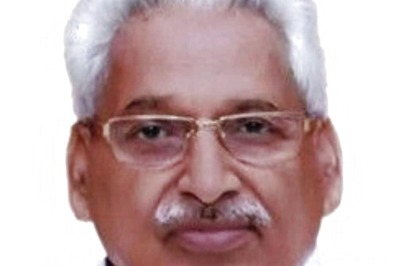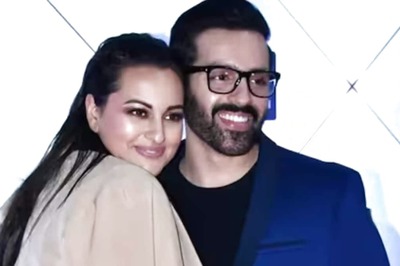
views
For The New York Times, habitué in Hindu baiting and denigrating Hindu festivals and rituals, the Durga Puja has not been an exception. Its New Delhi-based correspondent, an Indian, Suhasini Raj, who seems to have never participated in Durga Puja in West Bengal, and to have little grounding in Indian traditions, came out with a rather puerile piece on Durga Puja – ‘A Hindu Goddess Festival where Indian Progressivism is Alive and Well’. Instead of seeking for the religious and sacred traditions, she went around trying to sniff politics in what is Bengal’s and the Bengalis’ greatest religious and cultural festival.
Obviously, she tied herself in knots, got stuck in Kolkata and mainly spoke to those who had a political agenda to peddle and sell. Once the seat of a new wave of intellectual and cultural self-recovery and then the capital of the Raj, one of the key centres of the revolutionary movement, the nerve centre of partition politics, home to some of the intellectual, political and cultural giants of modern India, Kolkata — though muggy and crowded — has its own concrete and distinct sense of the self. The Durga Puja period is one of those which sees the whole city participate and celebrate without distinction.
In the last few years though, Mamata Banerjee’s government has introduced an “us and them” dimension in the celebrations by patronising clubs affiliated to the ruling party and often creating hurdles for those who are not affiliated to it or prefer to remain unaffiliated. Those who put up themes against social evils like the demon of corruption and the goblin of maladministration are straitjacketed as being against the Trinamool Congress (TMC). These pujas often face the Mamata administration’s ire. Also by insisting on inaugurating Durga Puja pandals during Pitra Paksha — a period of penance devoid of celebrations, dedicated to propitiating ancestors — Mamata Banerjee has faced criticism and generated resentment.
Though she puts up a façade of being secular through her utterances during Durga Puja, many recall how the festival itself faced an existential threat in Mamata Banerjee’s first term. Highlighting the issue, which had shaken West Bengal’s society and people in general, though most of the members of the intelligentsia beholden to Mamata Banerjee had remained silent, I had noted how in 2017, the Mamata government had issued a notification prohibiting Durga idol immersion between September 30 and October 1 on account of Muharram. On appeal by the BJP, the Calcutta High Court castigated her partisan stand, and observed, “Why can’t two communities celebrate together? When you (state government) are firm there is communal harmony in the state, why are you creating a communal distinction between the two? Let them live in harmony. Do not create a line between them. Let them live together.”
In 2016 too, Mamata Banerjee was pulled up for overplaying her appeasement politics during Durga Puja. Sometime in early August that year, Mamata announced that there would be no idol immersion post 4 p.m. on Vijaya Dashami, the day of the Durga idol immersion. Justice Dipankar Dutta of the Calcutta High Court, reprimanding the state government on its stand, had said that this was a very dangerous step taken by the Mamata government, in which she is infusing religion into politics. The result will be that the fissure between the two communities will widen further. Justice Dutta had observed that “there has been a clear endeavour on the part of the state government to pamper and appease the minority section of the public at the cost of the majority section without there being any plausible justification…The administration has failed to take note of the fact that Muharram is also not the most important festival for people who have faith in Islam… the state government has been irresponsibly brazen in its conduct of being partial to one community, thereby infringing upon the fundamental rights of people worshipping Maa Durga.” The pressure of the Court and an indignant public opinion led Mamata Banerjee to backtrack.
Banerjee had also termed as “terrorists” those who chanted ‘Jai Shri Ram’, a sacred chant of millions in India invoking the compassion and justice of the deity. That chant has often been portrayed by ignorant foreign correspondents and scholars as a “right-wing war cry against religious minorities.” Mamata’s police, in the past, had also imprisoned a number of those who chanted ‘Jai Shri Ram’, her party cadres had also shot at some of them. She has been trying to make amends since then.
The declaration of Durga Puja as an intangible cultural heritage of humanity by UNESCO after a determined bid by the Narendra Modi government and its ministries of Education, Culture and External Affairs has led to a heightened expectation in West Bengal that in the years to come, West Bengal’s Durga Puja will attract greater global attention. Mamata Banerjee was quick to claim credit for the UNESCO recognition, but she or her administration has had little role in it.
Like the TMC and the CPIM, the BJP too has been organising the celebrations of Durga Puja. Its first Puja was inaugurated by Prime Minister Modi, whose references and allusions to Bengal and the message of Durga Puja have created a ripple among those who heard him. It was the first time that the Prime Minister of India had spoken on Durga Puja and had inaugurated one. Since then, the BJP’s Durga Puja celebrations have been gaining ground. The ‘Syama Prasad Durgotsav Samman’ instituted by the Syama Prasad Mookerjee Research Foundation, in honour of the founder of the BJP’s political progenitor the Jana Sangh, Dr Syama Prasad Mookerjee, has attracted an increasingly larger participation across the state over the last four years.
BJP leader Sajal Ghosh’s Durga Puja pandals in north Kolkata have always been extremely popular with the people of Kolkata and the districts. This year, the pandal was a replica of the Ram temple to be inaugurated in Ayodhya in January 2024. It surpassed all records and easily became the favourite of the masses. Ghosh’s Durga Puja pandal has always attracted the largest crowds to the chagrin of the ruling TMC and its police and municipal leaders. Last year, on the 75th anniversary of India’s independence, Ghosh’s Durga Puja pandal had commemorated the occasion with a replica of the historic Red Fort and that too had attracted record crowds.
Unlike Mamata Banerjee and her party members such as the former bureaucrat Jawahar Sircar, now a Rajya Sabha member of the TMC, who provides ballast to the party’s kowtowing to the radical Islamist fringe, the BJP in West Bengal has always upheld and reflected the state’s cultural diversity with its essential Bengali Hindu identity. Its Durga Puja outreach also reflected the message of social inclusion with its leaders reaching out to the members of the ST and SC communities and to women who organised Durga pujas. By conferring on them recognition and support, the BJP highlighted the extensive percolation of this religious festival across social strata and sections.
There is a mind-boggling variety of Durga pujas across West Bengal. While theme-based Durga Puja pandals with a social message are just one dimension, the hinterlands of West Bengal are abound with a variety of Durga Puja celebrations, not enmeshed by themes, but reflecting Bengal’s Durga Puja’s earthy and elevating cultural essence. Some as old as centuries of being celebrated without a break in far-flung places continue to reflect the core of this religious festival and its intricate rituals. These are pools where cultural Bengal remains vibrantly preserved. A tour around West Bengal during Durga Puja brings out that essence showing how it is truly people’s religious festival, unencumbered by political derivatives or imposed meanings and free from false messages.
But this Bengal and its Durga puja elude the prejudiced correspondent, shallow scholar and the satellite intellectual and elite.
The author is Chairman, Dr Syama Prasad Mookerjee Research Foundation & Member, BJP National Executive Committee. Views expressed in the above piece are personal and solely that of the author. They do not necessarily reflect News18’s views.


















Comments
0 comment